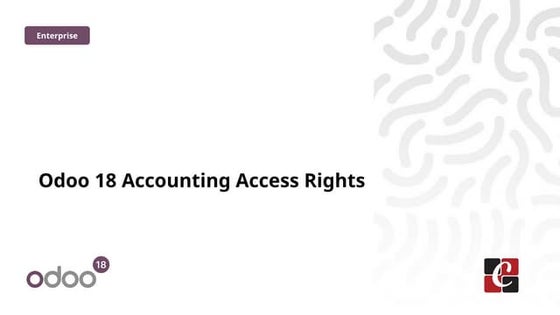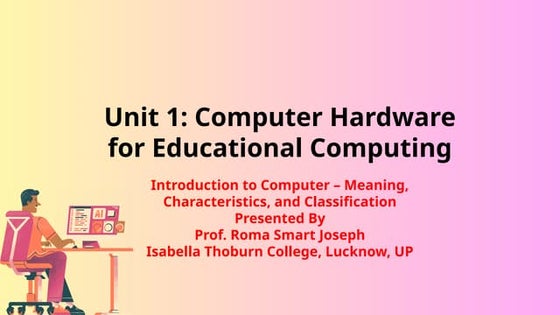Tom Cheesman - 6 March 2012 - Towards a Translation Array: Digitally Exploring Crowds of Translations at Swansea University
- 1. Towards a Translation Array: Digitally Exploring Clouds Crowds of Translations Tom Cheesman Swansea University College of Arts and Humanities Department of Languages, Translation and Media Research Seminar 2011-12 ŌĆō March 6, 2012
- 2. ŌĆśVersion Variation VisualisationŌĆÖ www.delightedbeauty.org Phase 1 (Feb-July 2011) Supported by Swansea U, College of Arts and Humanities, Research Innovation Fund Co-Investigators David M. Berry, Robert S. Laramee, Andrew J. Rothwell Research Assistants Alison Ehrmann, Zhao Geng Design consultant Stephan Thiel Phase 2 (Feb-Sept 2012): ŌĆ£Translation ArraysŌĆØ Supported by Arts and Humanities Research Council, Digital Transformations Theme, Research Development Fund Co-Investigators Robert S. Laramee, Jonathan Hope (Strathclyde) Research Assistant Kevin Flanagan Design consultant Stephan Thiel 2
- 3. Re-translations 3
- 4. Caroline Bergvall: ŌĆśVIA (48 Dante Variations)ŌĆÖ (2000 / 2004 / 2005) Variants: http://www.carolinebergvall.com/projects-sound.php http://media.sas.upenn.edu/pennsound/authors/Bergvall/Rockdrill-8/Bergvall- Caroline_06_Via_Via_Rockdrill-8_2005.mp3 http://mediamogul.seas.upenn.edu/pennsound/authors/Bergvall/Bergvall-Caroline-Via-2004.mp3 4
- 5. ŌĆ£In discarding chronological sequencing in favour of alphabetization, Bergvall carefully avoids any false sense of teleology toward some final, perfected English version of DanteŌĆÖs tercet, instead using paratactic form to emphasize the historical and contextual relativity of translation ŌĆ” [E]ach translation is an actualization of a particular point on a virtual line of continuous variation that passes through all possible instantiations of DanteŌĆÖs lines. Indeed, from this perspective, DanteŌĆÖs ŌĆ£originalŌĆØ can no longer be privileged as the basal statement which then undergoes various subtle nuances in meaning as it is diversely translated within different historical contexts. Rather, it occupies a certain point on that virtual line of semantic values, a line that includes all of its various English translations as well.ŌĆØ Jared Wells, ŌĆśCaroline BergvallŌĆÖsDeleuzian StutteringŌĆÖ (blog, 14 Dec 2010) http://sprattsmedium.blogspot.com/2010/12/caroline-bergvalls-deleuzian-stuttering.html 5
- 6. ŌĆ£The translations themselves thus find themselves 'out of jointŌĆś. However correct and legitimate they may be and whatever right one may acknowledge them to have, they are all disadjusted, since unjust in the gap [lŌĆÖ├®cart] that affects them: within them, for sure, as their meaning remains necessarily equivocal, then in their relation to one another and thus in their multiplicity, finally or first of all in their irreducible inadequacy to the other language and to the stroke of genius of the event that makes the law, to all the virtualities of the original. The excellence of the translation cannot help. Worse, and this is the whole drama, it can only aggravate or seal the inaccessibility of the other language. A few French examples from among the most remarkable, irreproachable, and interesting: [ŌĆ”].ŌĆØ Jacques Derrida, Specters of Marx, trans. adapted from Kamuf, 1994: 19 6
- 7. Retranslating Translating again Chain translating Back translating SL SL ST(e1) ŌåÆ TL1:TT1 ST ŌåÆ TT ŌåÆ TT2 ŌåÆ TT2(e2) (Ōåś) ŌåÖ ŌåÖ ŌåŚ Ōåś SLTT ST(e2) ŌåÆ Ōåō TT3 ŌåŚ Ōåō Ōåś ŌåŚ Ōåō ŌåÆ TT4 ŌåÆ TL2:TT ST(e3) ŌĆ” ŌĆ” ŌĆ” 7
- 8. ŌĆ£*ŌĆ”+ 'active' *rather than 'passive'+ retranslationsŌĆØ *not only reveal+ ŌĆ£historical changes in the target cultureŌĆØ *they also+ ŌĆ£yield insights into the nature and workings of translation itself, into its own special range of disturbances.ŌĆØ Anthony Pym, Method in Translation History, 1998: 82-84 8
- 9. Jan Willem Mathijssen, ŌĆśThe Breach and the Observance. Theatre Retranslation as a Strategy of Artistic Differentiation, with Special Reference to Retranslations of Shakespeare's Hamlet (1777-2001)ŌĆÖ (PhD, Utrecht, 2007, p.26) www.dehamlet.nl/the-breach-and-the-observance.htm _________________________________________________________________________________________ _ 9
- 10. Data visualisation for literary studies 10
- 11. FeridunZaimoglu and G├╝ntherSenkel, Nathan Messias(2006): NathanŌĆÖs sermon in a Wordle (from wordle.net ŌĆō cf. IBMŌĆÖs ManyEyes) 11
- 12. Phrase Net: < ŌĆÖs > in the Sonnets 12
- 13. Graphs from Franco MorettiŌĆÖsGraphs, Maps, Trees (2005) Timelines showing production of differing literary genres etc 13
- 14. Literary data visualisations Franco Moretti (1998), Atlas of the European Novel (2005), Graphs, Maps, Trees: Abstract Models for a Literary History Ben Fry (2009), ŌĆśOn the Origin of Species: The Preservation of Favoured TracesŌĆÖ at http://benfry.com/traces/ Stephan Thiel (2010), ŌĆśUnderstanding Shakespeare: Towards a Visual Form for Dramatic Texts and LanguageŌĆÖ at www.understanding-shakespeare.com 14
- 15. Translation variation visualisation Jan Rybicki (2003), ŌĆśOriginal CharactersŌĆÖ at http://www.cyf-kr.edu.pl/~strybick/original_characters.htm (2006) ŌĆśBurrowing into Translation: Character Idiolects in Henryk Sienkiewicz's Trilogy and its Two English TranslationsŌĆÖ, Literary and Linguistic Computing 21 (1): 91-103 Rybicki applies stylistics analysis (computer stylometry, based on distributions of ŌĆśstop wordsŌĆÖ) to differentiate between ŌĆśidiolectsŌĆÖ in the speech of Polish and foreign characters in three love triangles in the three novels by Sienkiewicz; and then Rybicki applies the same method to two translations of the trilogy. He finds that ŌĆ£patterns of difference and similarity are almost mysteriously preserved in the translationsŌĆØ, yet the translations flatten national differences, and introduce new ones: gender differences which are absent in the source. 15
- 16. Othello
- 17. 17
- 18. 18
- 19. Crux: ŌĆ£delightedŌĆØ Puns: ŌĆ£virtueŌĆØ, ŌĆ£delightedŌĆØ, ŌĆ£far moreŌĆØ, ŌĆ£fairŌĆØ, ŌĆ£blackŌĆØ Joke ŌåÜ Serious Insult ŌåÜ Praise Addressees? Overhearers? Duke: status, character Ideologies of state power, of gender, of race ŌĆō on & off stage 19
- 20. German versionscurrently in print Wenn man die Tugend mu├¤ als sch├Čn erkennen, D├╝rft Ihr nicht h├ż├¤lich Euren Eidam nennen. Baudissin 1832 Wenn zur Tugend die Freude an der Sch├Čnheit geh├Črt, dann ist Euer Schwiegersohn eher sch├Čn [hell] als schwarz. Klose 1971 Wenn es der Tapferkeit nicht an froher Sch├Čnheit mangelt, ist Euer Schwiegersohn eher wei├¤ als schwarz. Bolte/Hamblock 1976 wenn der Tugend nicht die lichte Sch├Čnheit fehlt, dann ist Euer Schwiegersohn viel eher hell als schwarz. Engler 1977 Wenn Ihr der Tugend nicht Sch├Čnheit absprechen wollt, Ist Euer Schwiegersohn nicht dunkel, sondern Gold! Fried 1970 G├żbs helle Haut f├╝r Edelmut als Preis, Dann w├żr Ihr Schwiegersohn statt schwarz reinwei├¤. G├╝nther 1995 Solange m├żnnliche Tugend mehr z├żhlt als Sch├Čnheitsfehler, kann man sagen, Ihr Schwiegersohn ist eher edel als schwarz. Zaimoglu/Senkel 2003 20
- 21. Baudissin (1830s): If one must recognise virtue as beautiful / you may not call your son-in-law ugly. Klose (1970s): Ifjoy in beautybelongstovirtue, thenyourson-in-lawisbeautiful [bright/light(hell)] ratherthanblack. Bolte/Hamblock (1970s): Ifcouragedoes not lack happy beauty, yourson-in- lawiswhiteratherthanblack. Engler (1970s): If virtue does not lack bright-lit (licht) beauty, then your son-in-law is much more bright/light (hell) than black. Fried (1970s): If you do not wish to deny beauty to virtue / your son-in-law is not dark but gold! G├╝nther (1990s): If bright/light (hell) skin were a prize for noble-mindedness / then your son-in-law would be pure white instead of black. Zaimoglu/Senkel (2000s): So long as male virtue counts more than blemishes [lit.: beauty-failings/-lacks], one can say your son-in-law is more noble than black. 21
- 22. Modern Englishes If valour is the measure of true beauty, your son-in-law is fairer than heŌĆÖs black. Shakespeare Made Easy. Othello, Alan Durband, 1989 If goodness is beautiful, your son-in-law is beautiful, not black. No Fear Shakespeare. Othello, John Crowther, 2003 If virtue is missing delightful beauty, / Your son-in-law is far more just than black. Othello. Side by Side, James Scott, 2005 A gloss *ŌĆ”+ your son-in-lawŌĆÖs virtues are so fine that they completely overwhelm any qualms you may have at his Negro race. Othello, ed. C.W.R.D. Moseley , 1974 A rewriting ŌĆ£If virtueŌĆÖs qualities are always rare / Your son-in-law is far more black than fair.ŌĆØ Bit clumsy. What if I change ŌĆ£fair ŌĆ£ to ŌĆ£whiteŌĆ£? Um ... what about: ŌĆ£If virtue lack no beauties that delight / Your son-in-law is far more black than white.ŌĆØ 22 Better: ŌĆ£whiteŌĆ£ has fewer positive connotations than ŌĆ£fairŌĆ£. Needs more work, though.
- 23. (2011), ŌĆśThirty Times More Fair Than Black: Shakespeare Retranslation as Political RestatementŌĆÖ,Angermion: Yearbook fur Anglo-German Literary Criticism, 4: 1-51. (2012) (forthcoming), ŌĆÖ"Far More Fair Than BlackŌĆØ: Mutations of a Difficult CoupletŌĆÖ. In Smith, B. and Rowe, K. (eds), Cambridge World Shakespeare Encyclopaedia, vol.2: The WorldŌĆÖs Shakespeare. Cambridge UP. 23
- 24. Crowd-sourcing www.delightedbeauty.org ŌĆó Translations in all languages + metadata + back-translations in English + usersŌĆÖ comments/debates ŌĆó See esp.: Polish, Persian, German ŌĆó VVV project outputs 24
- 25. 22 French versions supplied by Matthias Zach, 2010 25
- 26. Eddy and Viv 26
- 27. Statistical analysis of translation variation: ŌĆśEddyŌĆÖ and ŌĆśVivŌĆÖ ŌĆśEddyŌĆÖ is a measure of the lexical distinctiveness of a translation text (or segment of it) relative to all comparable texts (or segments) in the same target language. Eddy is defined as ╬ŻD/tf(w1,d ŌĆ” wN,d) where: each translation text/segment is a document, d, containing Nwords (i.e. from word 1 to word N, or: w1,d ŌĆ” wN,d); the corpus of all comparable ds contains D documents; and term frequency, tf, is the number of times a word occurs in the corpus. The algorithm 1. The documents are aggregated into a corpus. 2. Term frequencies are calculated for every word in the corpus. 3. For every word, tf is divided into D. (A common word acquires a low numerical value; a unique word has the highest value.) 4. D/tf totals for all words in each separate document (i.e. ŌĆ£w1,d ŌĆ” wN,dŌĆØ), are added together (╬Ż = sum of). Each total is the Eddy result for that document. 27
- 28. 28
- 29. Eddy results (rounded): 80ŌĆō335, measuring distinctiveness Text-types: S = Study edition, R = Reading edition, T = Theatre script 80Engler 1977 S: If virtue not lack bright-lit beauty, then your son-in-law is much more bright than black. 80 Wieland 1766 S: If virtue is the most-bright-shining beauty, then your daughterŌĆÖs husband is more white than black. 80Gundolf 1909 R: If virtue not lack charm and beauty / your son-in-law is less black than bright-lit. 80 Bodenstedt1867 R: If virtue does not lack charm and beauty, / your son-in-law is beautiful and lovable. [ŌĆ”] [ŌĆ”]240Engel 1939 T: If one speaks of virtue as of a light, / your son-in-law seems not so dark to me. 245Baudissin1832 R: If one must recognise virtue as beautiful, / you may not call your son-in-law ugly. 245Zeynek1945 T: If manly courage is not without charm and radiance/glory / then he is, even if black, highly estimable. 255Zaimoglu /Senkel2003 T: So long as male virtue counts more than blemishes, one can say your son-in-law is more noble than black. 270GildemeisterR 1871: Your son-in-law ŌĆō if virtue makes [people] lovely ŌĆō / resembles more the bright day than black night. 280G├╝nther1995 R: If bright/light skin were a prize for noble- mindedness, / then your son-in-law would be pure white instead of black. 290Laube1979 T: If virtue is beautiful, you now have as your reward / a black but beautiful son-in-law. 290RotheR 1956: If peopleŌĆÖs inward appearance alone *were all that] counted, / we would be darker than Othello. 305Schr├ČderR 1962: Where so much courage resides with so much zeal, / your son-in-law appears less black than blond. 335 Motschach1992 T: If outward appearance were always the prize for [or: price of] inner values / many a white man would appear black, many a black man white. (NB These Eddy results are for 35 German translations, not for the back-translations !) 29
- 30. 30
- 31. 31
- 32. Sets of Eddy results for different sample segments show limited similarity Ranges and distributions are significantly different Sample A: the DukeŌĆÖs ŌĆ£delighted beautyŌĆØ couplet: Eddy range 80-335, mean 182 Sample B: the first sentence in OthelloŌĆÖs great speech to the senate: Eddy range 16-310, mean 144 32
- 33. 33
- 34. ŌĆśVivŌĆÖ (Variant Intensity in Variation) measures the degree to which a source text (or segment) is associated with variation among its translations Provisional Viv formula: The Viv of a (segment of a) source text = the mean ( ) of the associated Eddy results (i.e. the sum of results, divided by the number of results), divided by SN ŌĆō i.e. the number of words in the source text (segment). This is a provisional, simple formula. Further experiments will discover how Viv can be weighted to reflect the ranges and distributions of Eddy results. Note that Viv is a value associated with the source segment and all the words in that segment. 34
- 35. Viv plotting For the DukeŌĆÖs ŌĆśdelighted beautyŌĆÖ couplet (in 35 differing German translations), Viv = 13 For the first sentence in OthelloŌĆÖs great speech to the senate (in 32 differing German translations), Viv = 5.3 By plotting Viv across all segments of an entire source text, we can create a new way of reading it ŌĆō as refracted through multiple translatorsŌĆÖ work. Readers donŌĆÖt even need to understand the translating language(s) ŌĆō (but they might feel encouraged to try to learn) 35
- 36. Translation Array design On the following slides: Mock-ups by Tom Cheesman and Stephan Thiel in: TC and the VVV Team, ŌĆśTranslation Sorting: Eddy and Viv in Translation ArraysŌĆÖ (draft paper, 2011, attached to www.delightedbeauty.org, and under consideration for the conference volume Un/Translatables) and included in the application to AHRC 36
- 37. 37
- 38. 38
- 39. 39
- 40. 40
- 41. SHAKESPEARE FOUND IN TRANSLATION http://globetoglobe.shakespearesglobe.com/home-shuffler http://www.shakespearesglobe.com/education/events/lectures- seminars/translation-lectures
- 42. New Variorum Edition of Shakespeare (inaug. Horace Howard Furness, 1860s): Othello, 1886 42
- 44. 44
Editor's Notes
- #12: This Wordle shows word frequencies (indicated by size; colour is decorative) in a long (5,000-word) sermon delivered by the titular Nathan, the self-appointed Messiah, in Zaimoglu and SenkelŌĆÖs 2006 ŌĆśtradaptationŌĆÖ of LessingŌĆÖs Nathan der Weise (1779). The visualisation cannot show what is most fascinating about this play. By casting Nathan as a Messiah, the dramatists unwittingly excavated an often overlooked subtext of LessingŌĆÖs play. The ŌĆśParable of the RingsŌĆÖ (which Zaimoglu and Senkel cut, Zaimoglu dismissing it as an ŌĆśAmmenm├żrchenŌĆÖ) is based on a narrative tradition going back to the 12th century, associated with Maimonides and other exiled and/or forcibly converted Jews. The parable is a response to an even older, transreligious, Messianic watchword: the doctrine of the ŌĆśthree impostorsŌĆÖ, these being Moses, Jesus, and Mohamed. This doctrine enshrines radical intolerance towards all the established religions, and that is why the parable of the rings is essentially ambiguous, interpretable as a plea for inter-religious respect, but also for universal disrespect, which in turn can be read atheistically, or messianically. The ŌĆśthree impostorsŌĆÖ doctrine gained new currency in the early 18th century in an anonymous and highly controversial book, De TribusImpostoribus, which Lessing knew. According to the research of Friedrich Niew├Čhner, the book was probably written by one of the Marannos, Jews or crypto-Jews expelled from Iberia, living in Amsterdam, London, and Hamburg, and the writing was probably sparked by Diaspora interest in the movement of SabbataiZewi. ZewiŌĆÖs messianic status had first been promulgated in 1665 by a charismatic millenarian preacher named Nathan of Gaza. Despite being ignorant of all this, Zaimoglu and Senkel translate LessingŌĆÖs Nathan into a millenarian, messianic enemy of the three religions. NathanŌĆÖs sermon denounces the three religions and their ŌĆśschandpriesterŌĆÖ. He brings new violence, ruptures, mayhem and death to Jerusalem. The visualisation shows the sermonŌĆÖs politically caution in apportioning rhetorical attacks. The text was revised, following comments (not only from me) that in the first version, Islam got off far more lightly than the other two religions. Even after a revision which devoted more space to attacking Islam, you can see here that the word ŌĆśchristianerŌĆÖ (bottom left) is prominent compared to ŌĆśjudenŌĆÖ (above herrn, vertical); and ŌĆśmoslemsŌĆÖ (to left of worden) are least often mentioned.
- #31: REVISED ŌĆō range is based on inverse document frequency count (Sept 2011)
- #32: Inverse document frequency calculated Sept 2011. Range 1-20





![ŌĆ£In discarding chronological sequencing in favour of alphabetization, Bergvall
carefully avoids any false sense of teleology toward some final, perfected
English version of DanteŌĆÖs tercet, instead using paratactic form to emphasize
the historical and contextual relativity of translation ŌĆ” [E]ach translation is an
actualization of a particular point on a virtual line of continuous variation that
passes through all possible instantiations of DanteŌĆÖs lines. Indeed, from this
perspective, DanteŌĆÖs ŌĆ£originalŌĆØ can no longer be privileged as the basal
statement which then undergoes various subtle nuances in meaning as it is
diversely translated within different historical contexts. Rather, it occupies a
certain point on that virtual line of semantic values, a line that includes all of
its various English translations as well.ŌĆØ
Jared Wells, ŌĆśCaroline BergvallŌĆÖsDeleuzian StutteringŌĆÖ (blog, 14 Dec 2010)
http://sprattsmedium.blogspot.com/2010/12/caroline-bergvalls-deleuzian-stuttering.html
5](https://image.slidesharecdn.com/swansealtm2012b-120307102143-phpapp01/85/Tom-Cheesman-6-March-2012-Towards-a-Translation-Array-Digitally-Exploring-Crowds-of-Translations-at-Swansea-University-5-320.jpg)
![ŌĆ£The translations themselves thus find themselves 'out of jointŌĆś. However
correct and legitimate they may be and whatever right one may acknowledge
them to have, they are all disadjusted, since unjust in the gap [lŌĆÖ├®cart] that
affects them: within them, for sure, as their meaning remains necessarily
equivocal, then in their relation to one another and thus in their
multiplicity, finally or first of all in their irreducible inadequacy to the other
language and to the stroke of genius of the event that makes the law, to all
the virtualities of the original. The excellence of the translation cannot help.
Worse, and this is the whole drama, it can only aggravate or seal the
inaccessibility of the other language. A few French examples from among the
most remarkable, irreproachable, and interesting: [ŌĆ”].ŌĆØ
Jacques Derrida, Specters of Marx, trans. adapted from Kamuf, 1994: 19
6](https://image.slidesharecdn.com/swansealtm2012b-120307102143-phpapp01/85/Tom-Cheesman-6-March-2012-Towards-a-Translation-Array-Digitally-Exploring-Crowds-of-Translations-at-Swansea-University-6-320.jpg)













![German versionscurrently in print
Wenn man die Tugend mu├¤ als sch├Čn erkennen,
D├╝rft Ihr nicht h├ż├¤lich Euren Eidam nennen. Baudissin 1832
Wenn zur Tugend die Freude an der Sch├Čnheit geh├Črt, dann ist Euer
Schwiegersohn eher sch├Čn [hell] als schwarz. Klose 1971
Wenn es der Tapferkeit nicht an froher Sch├Čnheit mangelt, ist Euer
Schwiegersohn eher wei├¤ als schwarz. Bolte/Hamblock 1976
wenn der Tugend nicht die lichte Sch├Čnheit fehlt, dann ist Euer Schwiegersohn
viel eher hell als schwarz. Engler 1977
Wenn Ihr der Tugend nicht Sch├Čnheit absprechen wollt,
Ist Euer Schwiegersohn nicht dunkel, sondern Gold! Fried 1970
G├żbs helle Haut f├╝r Edelmut als Preis,
Dann w├żr Ihr Schwiegersohn statt schwarz reinwei├¤. G├╝nther 1995
Solange m├żnnliche Tugend mehr z├żhlt als Sch├Čnheitsfehler, kann man sagen, Ihr
Schwiegersohn ist eher edel als schwarz. Zaimoglu/Senkel 2003 20](https://image.slidesharecdn.com/swansealtm2012b-120307102143-phpapp01/85/Tom-Cheesman-6-March-2012-Towards-a-Translation-Array-Digitally-Exploring-Crowds-of-Translations-at-Swansea-University-20-320.jpg)
![Baudissin (1830s): If one must recognise virtue as beautiful / you may not call your
son-in-law ugly.
Klose (1970s): Ifjoy in beautybelongstovirtue, thenyourson-in-lawisbeautiful
[bright/light(hell)] ratherthanblack.
Bolte/Hamblock (1970s): Ifcouragedoes not lack happy beauty, yourson-in-
lawiswhiteratherthanblack.
Engler (1970s): If virtue does not lack bright-lit (licht) beauty, then your son-in-law
is much more bright/light (hell) than black.
Fried (1970s): If you do not wish to deny beauty to virtue / your son-in-law is not
dark but gold!
G├╝nther (1990s): If bright/light (hell) skin were a prize for noble-mindedness / then
your son-in-law would be pure white instead of black.
Zaimoglu/Senkel (2000s): So long as male virtue counts more than blemishes [lit.:
beauty-failings/-lacks], one can say your son-in-law is more noble than black.
21](https://image.slidesharecdn.com/swansealtm2012b-120307102143-phpapp01/85/Tom-Cheesman-6-March-2012-Towards-a-Translation-Array-Digitally-Exploring-Crowds-of-Translations-at-Swansea-University-21-320.jpg)







![Eddy results (rounded): 80ŌĆō335, measuring distinctiveness
Text-types: S = Study edition, R = Reading edition, T = Theatre script
80Engler 1977 S: If virtue not lack bright-lit beauty, then your son-in-law is much more
bright than black. 80 Wieland 1766 S: If virtue is the most-bright-shining beauty, then
your daughterŌĆÖs husband is more white than black. 80Gundolf 1909 R: If virtue not
lack charm and beauty / your son-in-law is less black than bright-lit. 80
Bodenstedt1867 R: If virtue does not lack charm and beauty, / your son-in-law is
beautiful and lovable. [ŌĆ”] [ŌĆ”]240Engel 1939 T: If one speaks of virtue as of a light, /
your son-in-law seems not so dark to me. 245Baudissin1832 R: If one must recognise
virtue as beautiful, / you may not call your son-in-law ugly. 245Zeynek1945 T: If manly
courage is not without charm and radiance/glory / then he is, even if black, highly
estimable. 255Zaimoglu /Senkel2003 T: So long as male virtue counts more than
blemishes, one can say your son-in-law is more noble than black. 270GildemeisterR
1871: Your son-in-law ŌĆō if virtue makes [people] lovely ŌĆō / resembles more the bright day
than black night. 280G├╝nther1995 R: If bright/light skin were a prize for noble-
mindedness, / then your son-in-law would be pure white instead of black.
290Laube1979 T: If virtue is beautiful, you now have as your reward / a black but
beautiful son-in-law. 290RotheR 1956: If peopleŌĆÖs inward appearance alone *were all
that] counted, / we would be darker than Othello. 305Schr├ČderR 1962: Where so
much courage resides with so much zeal, / your son-in-law appears less black than
blond. 335 Motschach1992 T: If outward appearance were always the prize for [or:
price of] inner values / many a white man would appear black, many a black man white.
(NB These Eddy results are for 35 German translations, not for the back-translations !)
29](https://image.slidesharecdn.com/swansealtm2012b-120307102143-phpapp01/85/Tom-Cheesman-6-March-2012-Towards-a-Translation-Array-Digitally-Exploring-Crowds-of-Translations-at-Swansea-University-29-320.jpg)






























































